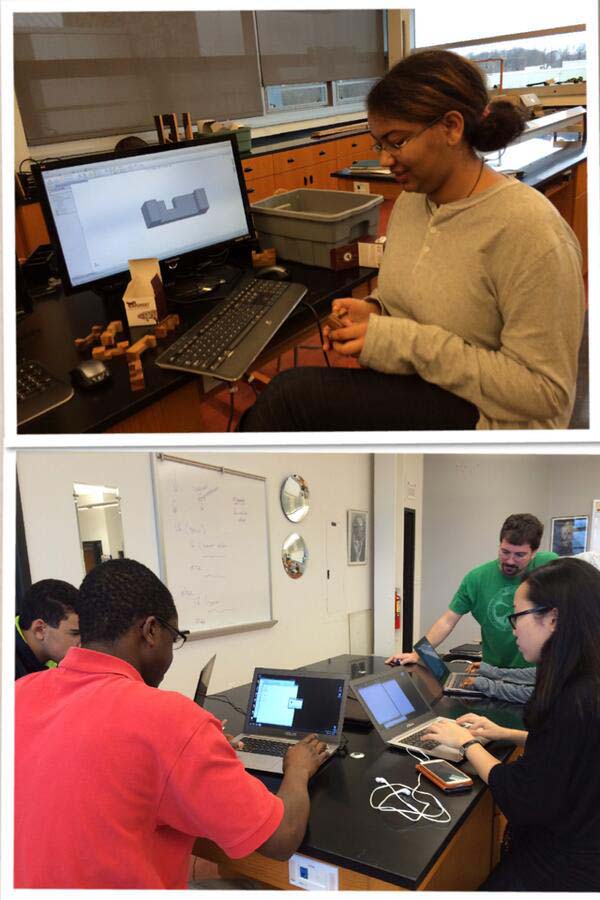Isabella Sanchez ’16: In a small room in the maintenance building from 3:45 to 6:15 a group of 23 students work together to build EA’s next winning robot. A winter sport, Robotics requires a commitment equivalent to that of a varsity athlete. Aside from it’s regular meetings during sports the Robotics team meets Saturdays from 10 A.M. to 4 P.M. This year’s team will be attending two local competitions in March and a regional one in Houston with hopes of winning and getting to Nationals.
Robotics begins along with the other winter sports, in November. Edward Mathisen, faculty advisor for the team said they take this time for “learning and building for our own small competition before winter break,” during which the students get to try new areas and appreciate the work others do. No prior experience is needed to join the team and every new member is welcomed. OB Peters ’16, first year member, said, “I started out knowing nothing and now I’m part of building an actual robot.”

Photo Courtesy of Dr. T.J. Locke
“Our actual season runs from New Years to Presidents day weekend…Coming back from the holiday break the teams in the area are gathered and the game for the year is released,” Mathisen expressed. “Every year is a new game so every year… you have to build a new robot and face new challenges.” This year the game consists of two teams of three, randomly grouped, going against each other in a 25 by 24 foot field. “[Teams] try to maximize their points earned by throwing balls over a truss, catching balls launched over the truss, and scoring in the high and low goals on the far side of the field.” as stated on the FIRST robotics competition website. As with any game there are a lot of restrictions, for example teams must be finished building by Presidents Day and robots may not exceed 112 inch perimeter or be taller than five feet. The competition days themselves are full of excitement and nerves. Cruce Merchant ‘16 says “I really like the competitions. They are always a lot of fun,” but Ob Peters ‘16 expressed “My biggest fear is getting there and the robot not working, that would just be embarrassing.”
The team begins building the robot by “creating a general plan of what the robot will do and look like. Then it is a lot of prototyping” explains Mathisen. The groups are divided into subteams. The build team is the largest group and takes care of the putting together of the robot. The Programing team takes care of writing code so the robot can function both autonomously and so it understands the commands given by the control. Another group is in charge of Computer automated design (CAD) that models the robot in 3-D. Everyday each team work hard to produce a winning robot. “It requires a lot of divide and conquer along with trial and error,” disclosed leader of the build team, Chris Whalen ‘14. “Though it’s a lot of hours, it’s something I really enjoy… I like seeing how things work”
Whalen says, “Its great seeing when things start coming together… all the different parts being built actually join to form a robot.”